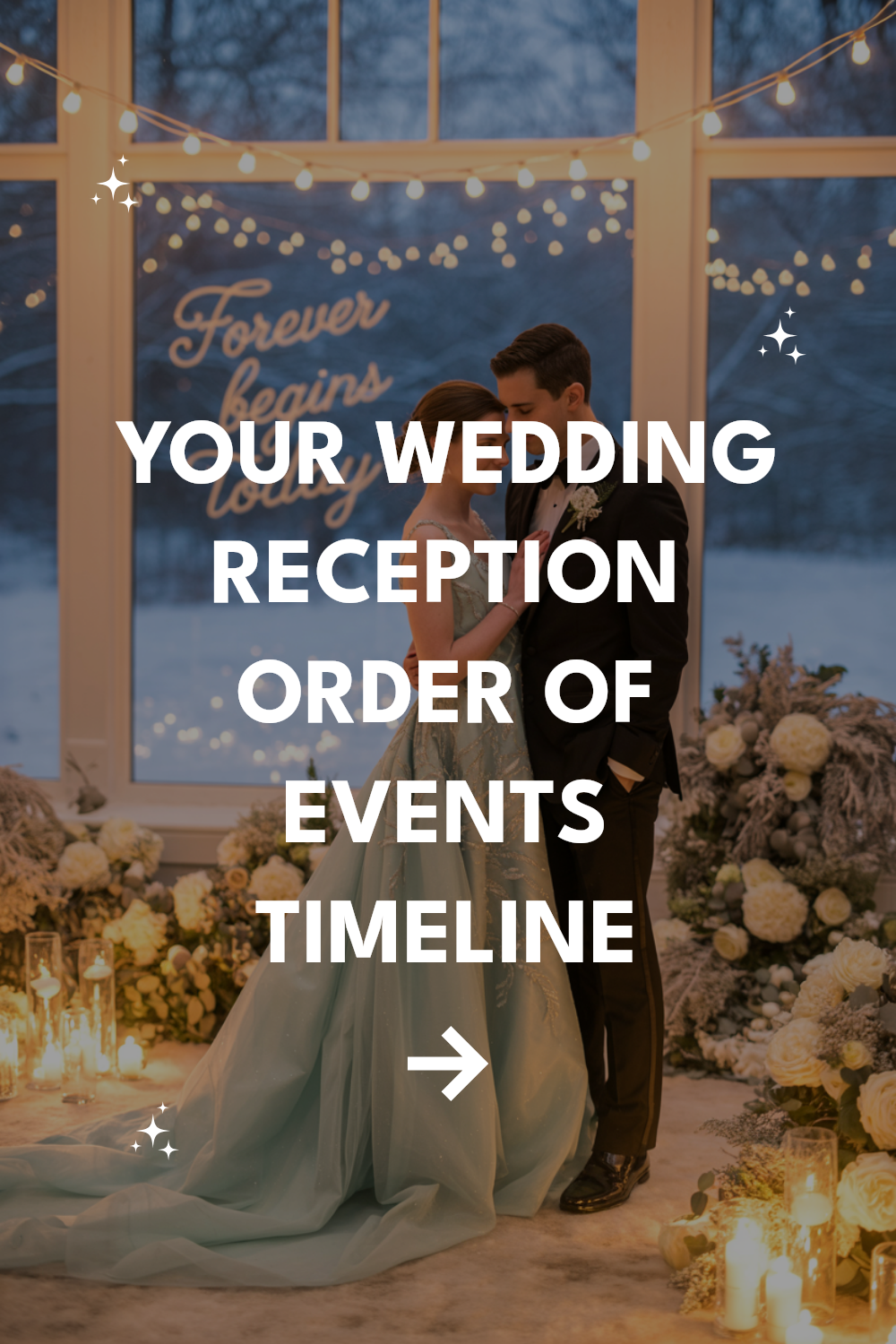Planning your reception timeline feels like choreographing a beautiful dance where everyone knows their steps.
The secret isn’t rigid scheduling—it’s creating a flexible framework that lets your celebration unfold naturally while keeping everyone fed, entertained, and reasonably sober.
The Pre-Reception Transition
Cocktail Hour Magic
Cocktail hour serves as the perfect buffer between ceremony emotions and reception festivities. Your guests need time to decompress, grab a drink, and shift gears from tearful ceremony witnesses to party participants.
This golden hour also gives you precious moments for photos while your guests mingle. Most couples use this time for family portraits and wedding party shots, knowing their loved ones are happily occupied with appetizers and conversation.
Behind-the-Scenes Coordination
While guests sip and socialize, your wedding party should be touching up makeup and preparing for grand entrance introductions. Your photographer will likely steal you away for those coveted golden hour shots.
Vendors use this time to finalize reception setup—adjusting centerpieces, testing microphones, and ensuring dinner service runs smoothly. It’s controlled chaos that guests never see but absolutely depends on for seamless execution.
The Grand Entrance and Introductions
Setting the Reception Tone
Your entrance sets the entire evening’s energy, whether you choose elegant simplicity or full-blown party mode. Some couples prefer a quiet entrance during cocktail hour, while others want spotlight introductions with custom music.
The wedding party introduction gives your closest friends their moment to shine. Keep it moving—guests are ready to celebrate, not sit through lengthy individual spotlights.
Music and Energy Management
Your DJ or band should read the room during introductions. If guests seem ready to party, amp up the energy. If they’re still settling in, keep things warm but not overwhelming.
Consider your venue’s acoustics and guest demographics. A room full of grandparents might appreciate different entrance music than a crowd of college friends ready to dance immediately.
Dinner Service Strategy
Timing the Meal
Dinner timing can make or break your reception flow. Serve too early, and you’ll have restless guests afterward. Wait too long, and you’ll have hangry relatives making pointed comments about empty stomachs.
Most successful receptions serve dinner within ninety minutes of cocktail hour’s start. This gives enough time for photos and mingling without testing anyone’s patience or blood sugar levels.
Service Style Considerations
| Service Type | Timeline Impact | Guest Experience | Best For |
|---|---|---|---|
| Plated Dinner | 45-60 minutes | Formal, seated | Traditional celebrations |
| Buffet Service | 30-45 minutes | Interactive, flexible | Casual atmospheres |
| Family Style | 30-40 minutes | Intimate, communal | Smaller guest counts |
| Food Stations | 60-90 minutes | Social, extended | Party-focused receptions |
Buffet service keeps energy higher as guests move around, but plated dinners create natural conversation lulls perfect for speeches. Choose based on your celebration’s personality, not just budget considerations.
Speech and Toast Coordination
Strategic Speech Placement
Speeches work best during natural conversation lulls—typically between dinner courses or right after the main course. Avoid scheduling them during dessert service when servers are moving around tables.
Limit speeches to four maximum, and give speakers clear time guidelines. Nothing kills reception momentum like a rambling best man who thinks he’s performing stand-up comedy for twenty minutes.
Managing the Microphone
Designate someone reliable to wrangle the microphone between speakers. Uncle Bob shouldn’t be wandering around looking for the MC while your photographer misses the shot and guests lose interest.
Brief all speakers beforehand about content appropriateness and time limits. A quick “keep it under three minutes and wedding-appropriate” conversation prevents awkward moments and restless audiences.
Dancing and Entertainment Flow
Opening the Dance Floor
Your first dance signals the transition from dinner formality to party time. Keep it meaningful but not marathon-length—guests want to join the celebration, not watch a lengthy performance.
Parent dances and anniversary dance traditions work well immediately after your first dance while guests are still focused and seated. These special moments deserve attention before party mode fully kicks in.
Maintaining Dance Floor Energy
Smart DJs read the room and adjust music accordingly throughout the night. Start with crowd-pleasers that get multiple generations moving, then gradually shift toward your preferred party music.
Plan special dances and traditions for peak energy moments, typically between nine and ten PM. This timing catches guests at their happiest, most relaxed state before anyone starts getting tired.
Late-Night Energy Management
Reception energy naturally ebbs and flows throughout the evening. Expect a slight lull around ten PM as older guests begin departing and remaining party-goers refuel.
This transition time works perfectly for cake cutting, bouquet toss, or other traditional moments. These activities re-energize the room while giving departing guests a natural exit point.
Special Traditions and Moments
Cake Cutting Ceremony
Schedule cake cutting when you need an energy boost or natural photo opportunity. Many couples choose this moment strategically—either as dessert service begins or during the evening’s second wind.
Keep the actual cutting brief and sweet. Guests want the cute photos and maybe some cake, but lengthy cake ceremonies can stall party momentum when energy is building.
Bouquet and Garter Traditions
These traditions work best when the dance floor is already energized and guests are feeling festive. Attempting them during dinner or early reception often feels forced and awkward.
Consider your guest list’s comfort level with these traditions. Some crowds love the playful energy, while others prefer skipping these moments entirely for different celebration styles.
Vendor Coordination Throughout
Photographer Timeline Sync
Your photographer needs advance notice about special moments for proper positioning and lighting. Share your timeline early and build in buffer time for important shots.
Coordinate with your photographer about family photo timing during cocktail hour. These formal shots require organization but shouldn’t monopolize your entire pre-reception time together.
Catering Service Flow
Work with your caterer to coordinate speech timing with service. Servers clearing plates during heartfelt toasts creates unnecessary distraction and noise.
Discuss bar service timing, especially last call announcements. Most venues require final bar service thirty to sixty minutes before reception end, depending on local regulations.
Flexibility and Contingency Planning
Building Buffer Time
Real receptions rarely follow exact timelines, and that’s perfectly normal. Build fifteen-minute buffers around major transitions to accommodate natural delays without stress.
Weather delays, transportation issues, or family photo complications can shift everything later. Flexible timelines prevent cascade delays that leave guests wondering what’s happening next.
Reading Your Crowd
Sometimes your timeline needs real-time adjustments based on guest energy and engagement. If everyone’s having amazing conversations during cocktail hour, extending it slightly won’t hurt anything.
Conversely, if guests seem ready to party immediately after dinner, don’t force lengthy speech segments. Your celebration should feel natural, not rigidly scheduled.
Wrapping Up Your Perfect Timeline
Creating your reception timeline isn’t about military precision—it’s about crafting a framework that supports your celebration’s natural rhythm. The best receptions feel effortless because someone planned thoughtfully behind the scenes.
Trust your vendors, communicate clearly with your wedding party, and remember that small delays or changes won’t ruin anything. Your guests want to celebrate your love story, and they’ll follow your lead whether you’re five minutes early or fifteen minutes behind schedule.


